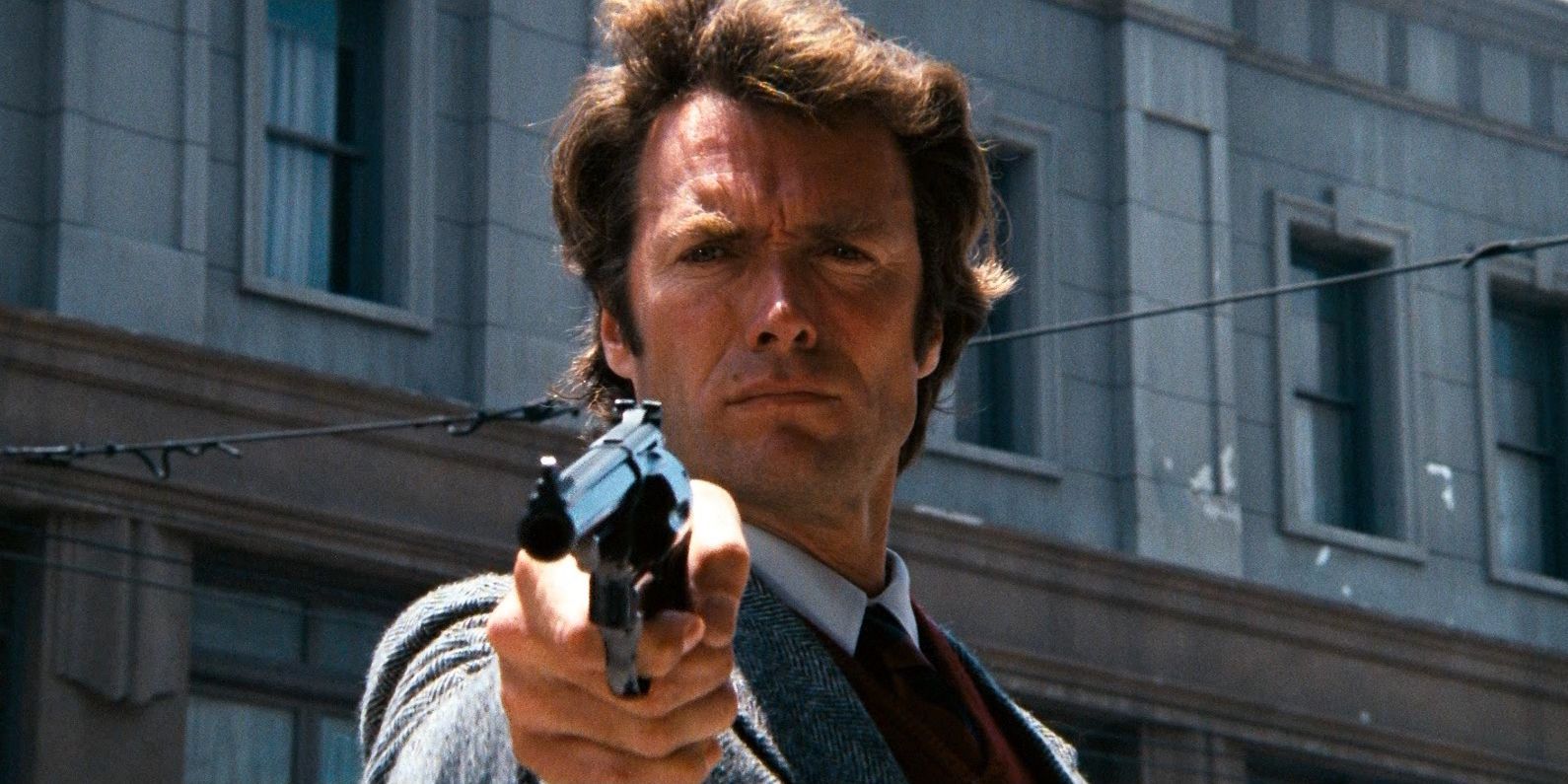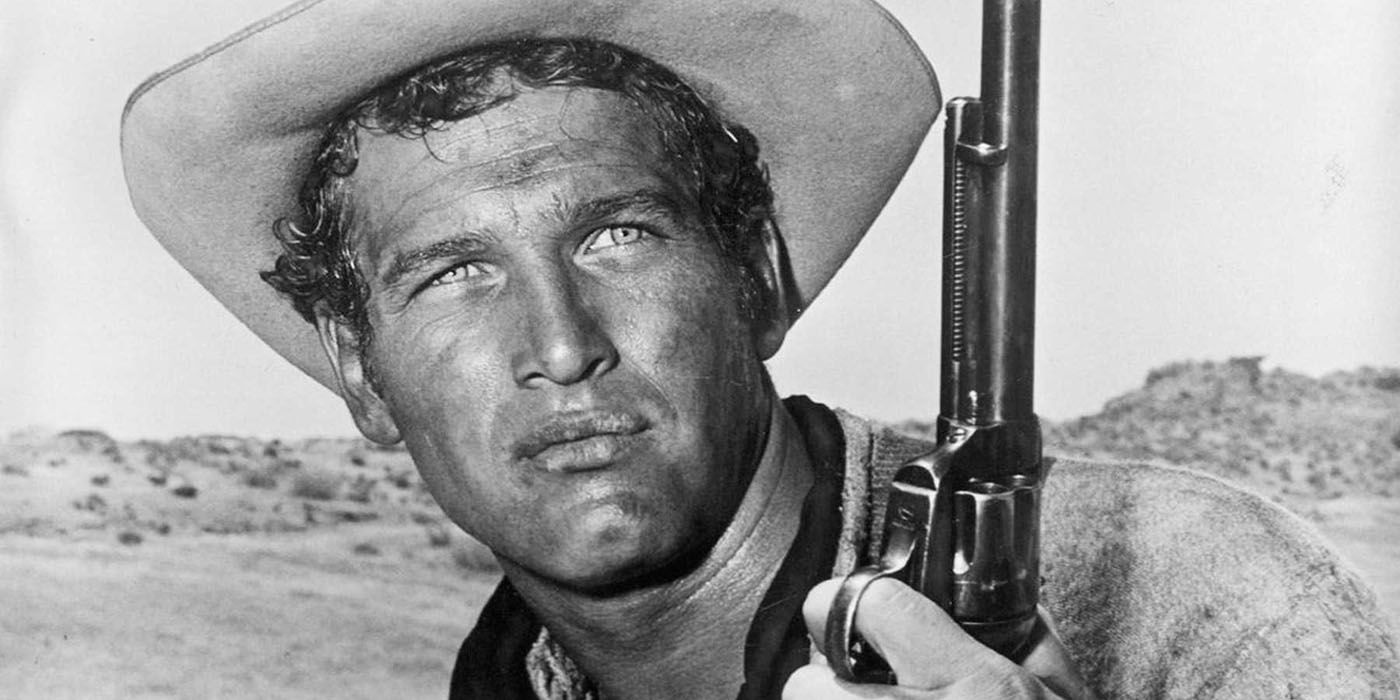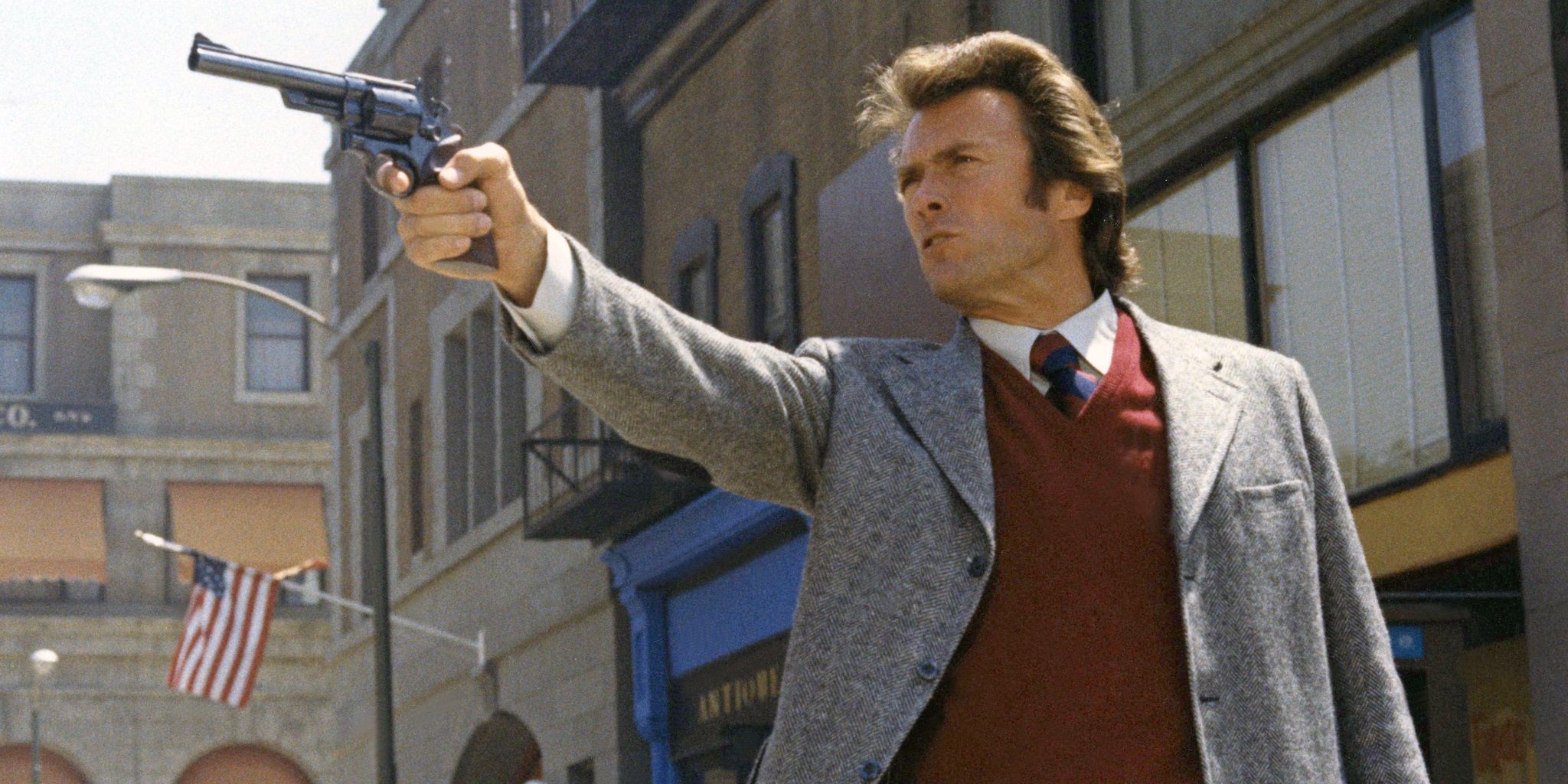Clint Eastwood
Things Clint Eastwood Fans Might Not Know
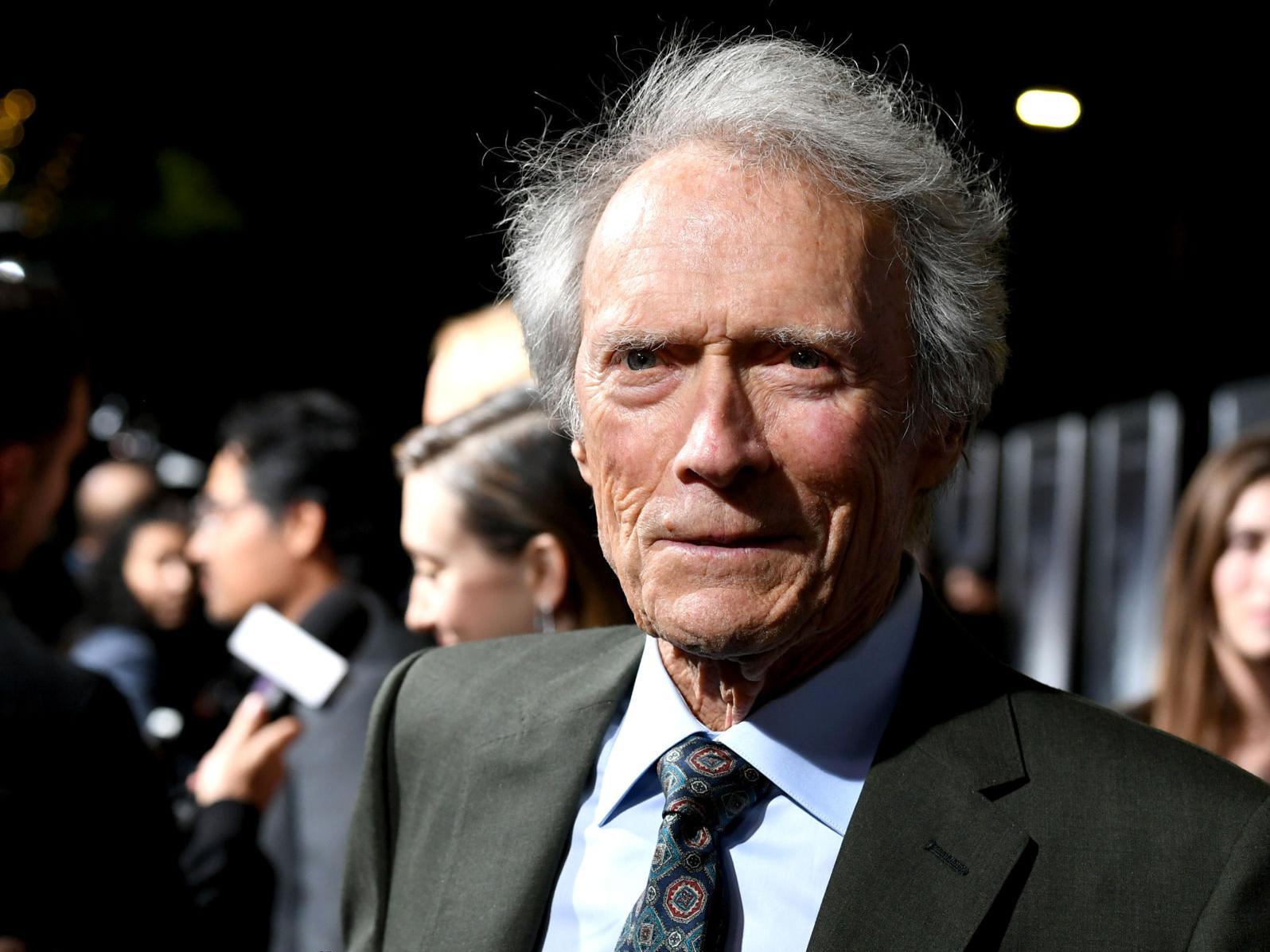
Clint Eastwood is a man who needs no introduction, but with a career as long and illustrious as his, we can’t help but give him one anyway. Eastwood made a name for himself in westerns, with early successes on the 1959 television series “Rawhide” and in director Sergio Leone’s “Dollars Trilogy.” But he didn’t stop there. As a director, Eastwood has made over 30 films, two of which won him an Academy Award for Best Director.
Eastwood hasn’t given any indication that he’ll be slowing down anytime soon, even though the films he stars in have been acknowledging how old he is for about 30 years now. His work ethic is simply too indefatigable — he didn’t even stop making movies after he was elected mayor of Carmel-by-the-Sea, California, for a two-year term. You may know a lot about the storied actor, director, and politician, but it’s doubtful that you know everything. Let’s take a look at some things even diehard Clint Eastwood fans might not know.
American Sniper was Clint Eastwood’s biggest hit ever
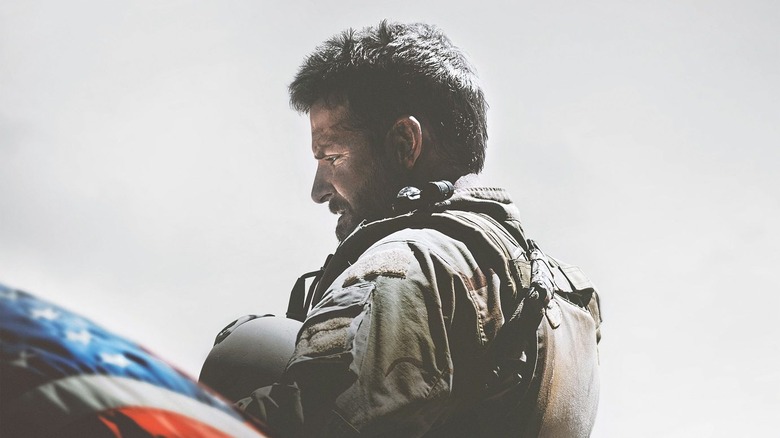
Sometimes, when a film breaks a box office record, the reason why isn’t as impressive as you might expect. Due to inflation, it’s only a matter of time before any given record falls, after all — a nickel just doesn’t buy what it used to. In that sense, it might not seem like a surprise that Clint Eastwood’s 2014 directorial effort, “American Sniper,” is the highest-grossing film of his career, with $350 million made in North America alone and $547 million earned worldwide. But in fact, even when adjusted for inflation, “American Sniper” is still Eastwood’s biggest movie, made on either side of the camera.
Eastwood’s second-highest grossing movie, when adjusted for inflation, is the James Fargo-directed “Every Which Way but Loose,” aka “The one with Clint and an orangutan.” Its $85 million gross, earned in 1978, would be roughly $356 million today. Not bad at all.
Eastwood was against the ԝаr in Iraq
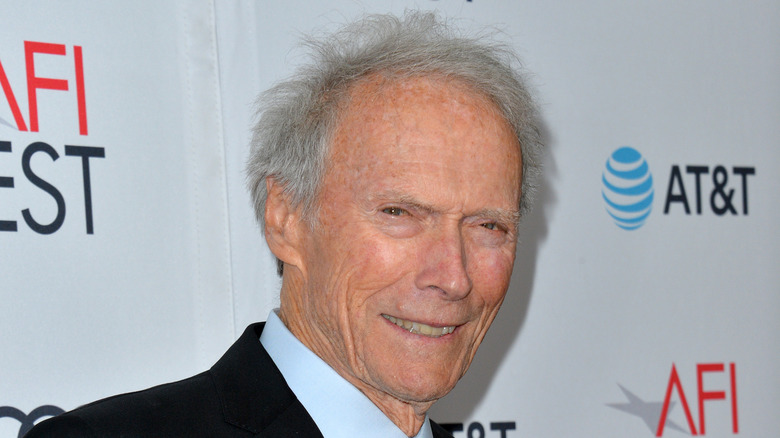
While “American Sniper” can be seen as being in favor of the United States’ post-9/11 ԝаrs, Eastwood wasn’t actually a fan. After a 2014 screening of the film, the famed director said (via The Hollywood Reporter), “I was against going into the ԝаr in Iraq since I figured we would probably trip over ourselves in some way.”
This might seem like a surprise, given Eastwood’s conservative politics. But deep consideration of the themes present in “American Sniper” reveals a movie fairly in line with Eastwood’s criticism of the ԝаr. Certainly, Eastwood deserves criticism for sanding away the real Chris Kyle’s rough edges (via The Guardian). But the film isn’t a right-wing fantasy, a la “Rambo: First Blood Part II.” “American Sniper” addresses the brutal costs of ԝаr, especially through Kyle’s PTSD. Eastwood is, after all, a man who’s made World ԝаr II films from both the American and Japanese perspectives, with “Flags of our Fathers” and “Letters from Iwo Jima.” He’s a lot more complex than most people realize, something he made clear with another comment from that 2014 screening: “Contrary to public opinion, I abhor violence.”
Clint Eastwood’s film debut was featured on an episode of Mystery Science Theater 3000
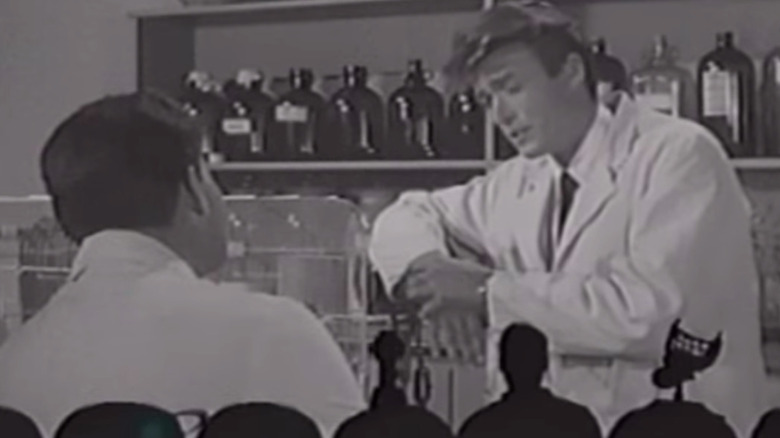
Many actors struggle to get their first roles, and Clint Eastwood is no exception. After a number of unsuccessful try-outs and a slew of minor gigs doing looping and “wild voices,” Eastwood was finally able to land his first real role: A small, inconsequential part in 1955’s “Revenge of the Creature,” director Jack Arnold’s disappointing sequel to his 1954 classic, “Creature from the Black Lagoon.”
The film has been largely forgotten. But in 1997, “Mystery Science Theater 3000,” a show that rose to fame by mocking bad B-movies, decided “Revenge of the Creature” was worth riffing off of, and aired it in full. In Eastwood’s scene, he plays a scientist experimenting with mice who’s convinced a cat has eaten one of them, until he realizes it’s been in his pocket all along. Upon seeing the performance from the young actor, Crow remarks, “This guy’s bad. This is his first and last movie.”
Clint Eastwood directed the jumper scene in Dirty Harry
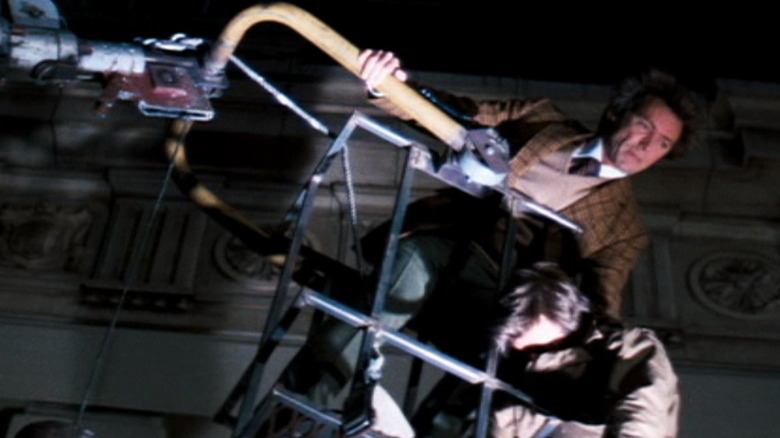
By the time that Clint Eastwood and his longtime collaborator Don Siegel were filming “Dirty Harry,” Eastwood had already ѕһot his directorial debut, “Play Misty For Me.” As Siegel had helped Eastwood out with the filming of “Play Misty for Me,” as detailed in Patrick McGilligan’s “Clint: The Life and Legend,” Eastwood returned the favor by directing a scene in “Dirty Harry” after Siegel came down with the flu.
In the scene in question, Harry Callahan has to talk a man out of jumping off a building and get him to cross to the safety of his crane. He does so by indifferently detailing the gruesomeness of ԁеаtһ, spurring the man to leap angrily onto the crane. While it’s unrelated to the larger plot, this scene illustrates why he’s called “Dirty Harry” — he does the jobs that no one else wants to do. Eastwood, ever the vivid director, captured the scene brilliantly.
His alias in The Enforcer was inspired by Don Rickles
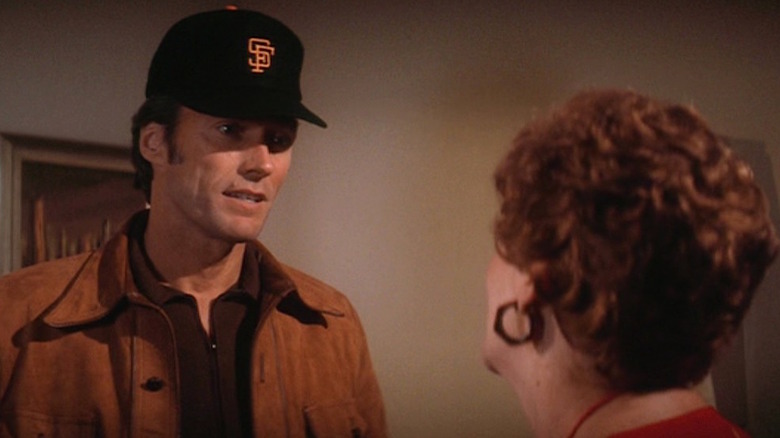
There’s a memorable scene in the third “Dirty Harry” film, 1976’s “The Enforcer,” where Harry Callahan’s investigation leads him to a brothel. He gives his name as Larry Dickman. It turns out that this name came from Eastwood’s “Kelly’s Heroes” co-star, Don Rickles, who used to tease Eastwood on set.
Eastwood revealed this fact in John Landis’ 2007 documentary, “Mr. Warmth: The Don Rickles Project.” Rickles confirmed it when he spoke to The Daily Beast in 2015. “I did a few movies, but the word star … I cannot compare to a star like Clint Eastwood,” the famous insult comic remarked. “I used to call Clint ‘Larry Dickman’ when he would come to my show, then he started using the name when he would go undercover in a ‘Dirty Harry’ movie. That’s why he’s a movie star … he’s so creative.” While he’s not always known for his humor, Eastwood can definitely take a joke at his expense.
Clint Eastwood learned how to mountain climb for The Eiger Sanction
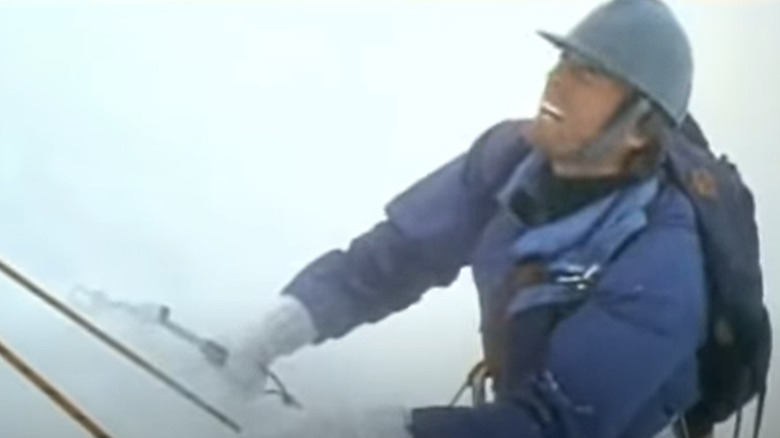
Long before Jackie Chan and Tom Cruise became famous for their ԁеаtһ-defying stunts, Clint Eastwood climbed a mountain for 1975’s “The Eiger Sanction,” a film he directed and starred in. Many critics didn’t care for its plot, which involves a government hitman called in to do one last job, but the film’s action scenes were well-recieved. Considering Eastwood really did hang off the side of a treacherous peak to create them, that’s some seriously well-earned praise.
For all the hard work Eastwood put into those scenes, however, they weren’t able to please everyone. As he told Roger Ebert, “I didn’t want to use a stunt man, because I wanted to use a telephoto lens and zoom in slowly all the way to my face — so you could see it was really me. I put on a little disguise and slipped into a sneak preview of the film to see how people liked it. When I was hanging up there in the air, the woman in front of me said to her friend, ‘Gee, I wonder how they did that?’ and her friend said, ‘Special effects.’” Sometimes, a job can be done too well.
The final Dirty Harry film was directed by Clint Eastwood’s longtime stunt double
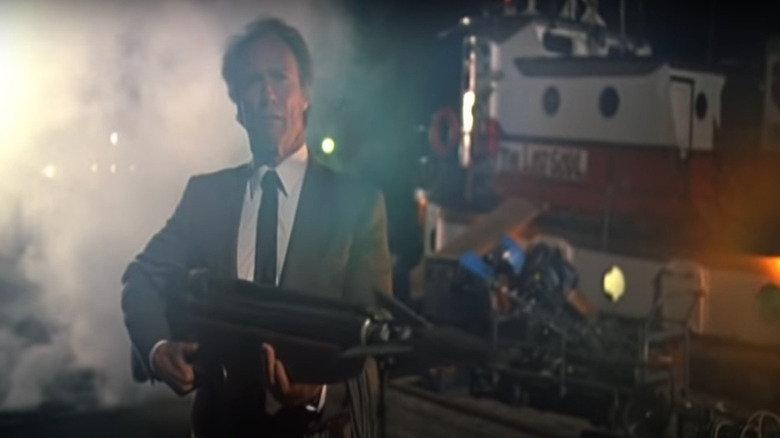
Buddy Van Horn and Clint Eastwood were brought together when Van Horn acted as Eastwood’s stunt double in 1968’s “Coogan’s Bluff.” Van Horn went on to serve as Eastwood’s stunt coordinator for almost all of his films up until 2011’s “J. Edgar,” and his occasional director. In fact, all three films Van Horn directed starred Eastwood, including the last “Dirty Harry” film, 1988’s “The Dеаԁ Pool.”
In a 2011 interview with The Independent, Van Horn discussed their relationship, paying particular attention to Eastwood’s daredevil streak. “There’s been a couple of times that he’s wanted to do something and I talked him out of it,” Van Horn recounted. “He’s a pretty physical guy and likes to do his own stunts. Some of the things he does were pretty easy to get banged up. I’ve tried to talk him out of it sometimes, but not very successfully most of the time.” Though Van Horn might not have been able to keep Eastwood from injury, their collaboration certainly proved to be a successful one.
Clint Eastwood turned down Apocalypse Now and almost starred in Die Hard
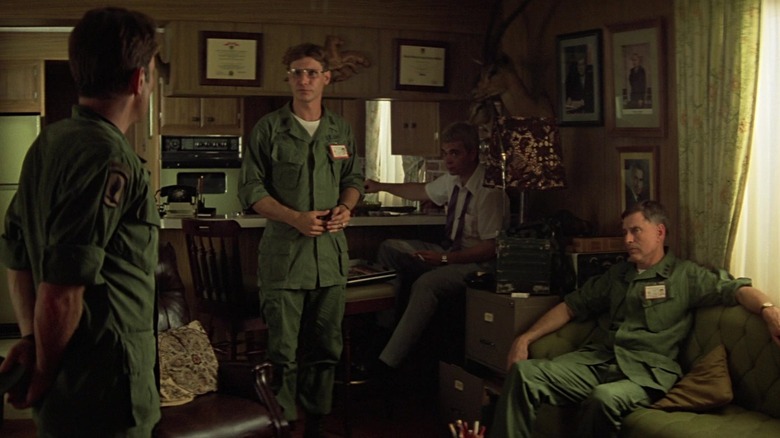
It’s well known that Clint Eastwood turned down opportunities to play James Bond and Superman, but those aren’t the only iconic roles he’s said no to. Eastwood could have scored a starring role in Francis Ford Coppola’s 1979 classic “Apocalypse Now,” but ultimately refused it — he didn’t want to spend so much time overseas. As he told The Hollywood Reporter in 2011, “I did read ‘Heart of Darkness’ when I was young and so I kind of knew where it was going but then I said no, I don’t think I can go off for that long a time. He was going to go 16 weeks in the Philippines.”
Additionally, Eastwood also owned the rights to “Nothing Lasts Forever,” the novel “Die Hard” was based on. Though he wanted to star in it, he ultimately chose to focus on other projects. The scene where Hans Gruber mocks John McClane for acting like an American cowboy would definitely play a lot differently if Eastwood occupied the role.
Clint Eastwood didn’t vote for Pulp Fiction at the 1994 Cannes Film Festival
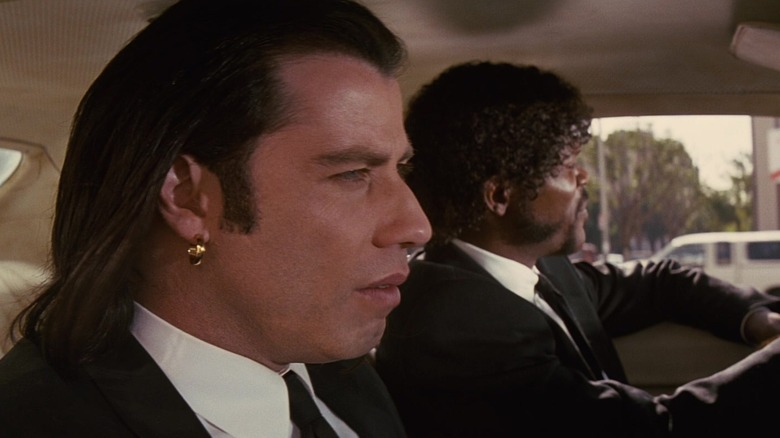
Just about everyone, Quentin Tarantino included (per The Hollywood Reporter), expected the 1994 Cannes Film Festival’s Palme d’Or would be awarded to Krzysztof Kieslowski’s “Red,” the third and most acclaimed film in his “Three Colours” trilogy. So it was quite a shock when it went to “Pulp Fiction” instead. Many suspected that this American film won because of that year’s American jury president, Clint Eastwood. But in fact, Eastwood voted for a Chinese film instead.
Upon his return to Cannes in 2008, Eastwood revealed this fact to The New York Times. “I’m interested in everything,” he remarked. “On the jury here when ‘Pulp Fiction’ won, somebody said, ‘Oh, Clint Eastwood was on the jury, so he voted for the American film.’ But my sensibilities are European, here is where my success started. Actually, Zhang Yimou’s ‘To Live’ was my favorite piece, but most of the European jurors seemed to like ‘Pulp Fiction.’” Despite his disagreement with the ultimate winner, “To Live” did wind up being one of two winners of the Grand Prix du Jury that year, which is a fancy way of saying that it tied for second place.
Clint Eastwood is allergic to horses
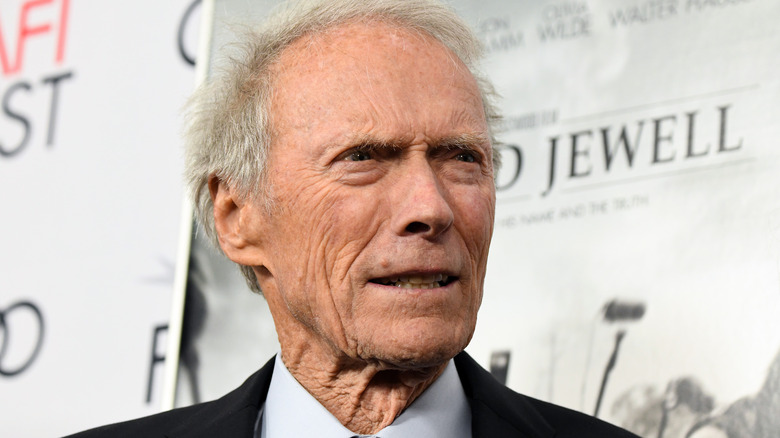
Clint Eastwood may be known for his legendary westerns, but it turns out that he’s not a fan of one of their trademark elements: horses. Eastwood is actually allergic to horses, which means he has to limit the amount of time he spends on them. He’s also allergic to cats, dogs, and even the orangutan from “Every Which Way but Loose.”
These days, the nonagenarian has other reasons to worry about riding a horse: Even the most minor injury can be a major problem for someone his age. As he told the Los Angeles Times in a 2021 interview about the making of “Cry Macho,” “The [horse] wrangler was worried. She was saying, ‘Be careful, be careful now.’ She was scared I’d end up on my rear end. But if you treat the horse like a buddy, he’ll take care of you.” He doesn’t mention his allergy in this interview, but it’s clear that he doesn’t let it get in the way of the crucial bond between horse and rider.
You may like
Clint Eastwood
Mystic River: Why Clint Eastwood’s Best Movie Still Holds Up Today

A filmmaker of Clint Eastwood‘s caliber is going to have a filmography full of gems. Primarily known for his work in Westerns, biopics, and military dramas, every so often, Eastwood steps outside his comfort zone and delivers in a genre that would seem completely unexpected on paper. That happened in 2003 with Mystic River, a neo-noir murder mystery drama that seems a bit forgotten or overlooked, even though it was a financial success and earned six Academy Award nominations. It represents Eastwood at his very best, breathing vivid life into complex characters as he examines a plethora of themes that range from loyalty, friendship, revenge, and, ultimately, forgiveness.

Mystic River is based on the 2001 novel of the same name by Dennis Lehane, and it follows the lives of three childhood friends, Jimmy Markum (Sean Penn), Sean Devine (Kevin Bacon), and Dave Boyle (Tim Robbins), living in Charlestown, Boston in 1975. Dave is kidnapped by two men claiming to be police officers, and he’s sexually abused by them over a four-day period until he escapes. The traumatic event shapes the three friends, and they ultimately lead very different lives twenty-five years later.
Jimmy is an ex-con that now owns a convenience store in the neighborhood, Sean works for the Massachusetts State Police as a detective, and Dave is your everyday blue-collar worker that still lives with the trauma of being abducted and raped. Their lives are forced together once again through tragedy when Jimmy’s daughter Katie (Emmy Rossum) is found murdered, and friendship is tested when all signs point to Dave being the murderer.
Mystic River Is a Departure From Clint Eastwood’s Other Work
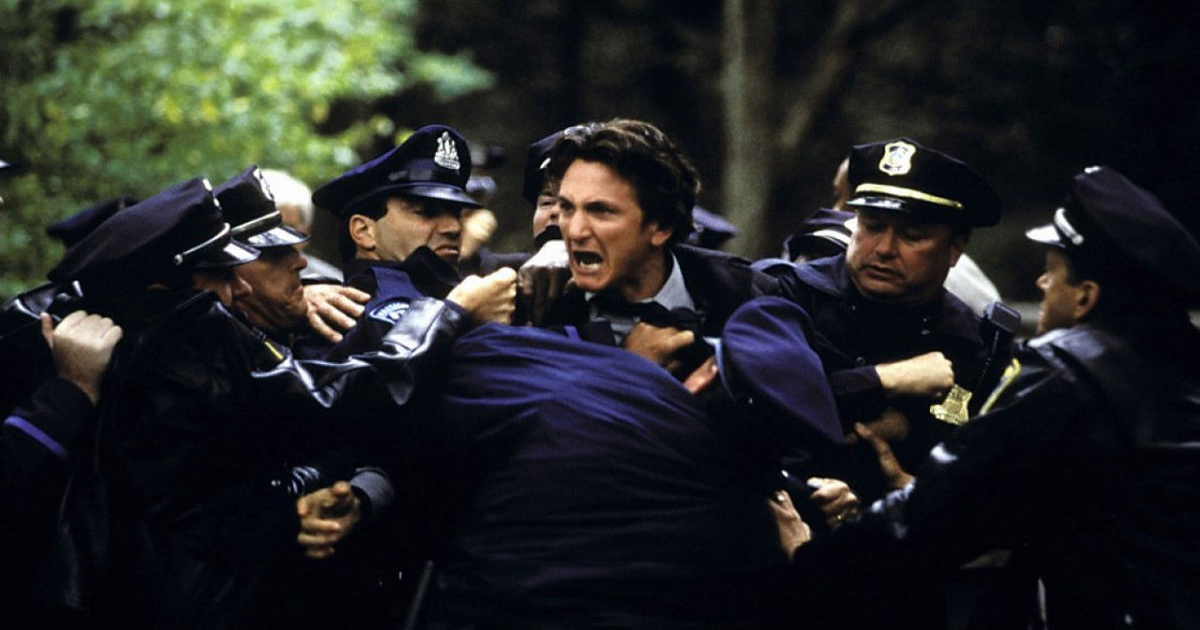
Eastwood tackles the material in Mystic River with a sure and confident hand. It also represents a unique departure from some of his other films. Much of the action takes place under the cover of darkness, and Eastwood is able to find beauty in that darkness. The filmmaker focuses on a character’s eyes or the gleam of a weapon, for instance, as darkness permeates most of the scene.
For the scenes that take place during the day, the filmmaker opts for tight close-ups that linger over the emotions of his impressive cast. There is something uncomfortably intimate about Mystic River, and that has much to do with the subject matter. None of this story is particularly easy to digest, and Eastwood adds to that discomfort with his choices to frame scenes in such a way that’s almost intrusive. The audience feels a growing sense of dread and tension as more of the story unfolds.
Using Lehane’s novel and Brian Helgeland’s screenplay as a blueprint, Eastwood profoundly explores generational trauma and how the sins of the past can leave a permanent mark on our present. Even though the abuse only happened to Dave, the effects of the event leave a mark on all three friends, with Dave being the primary victim and the others feeling a sense of survivor’s guilt for not being subjected to it themselves.
The ordeal forever changes their union because they’re never quite able to look at each other the same way again, as each friend deals with the trauma differently. Jimmy is stunned by the act of abuse but can’t give Dave the support he needs, which then bleeds into their present when Jimmy begins to suspect that Dave had something to do with his daughter’s murder. He doesn’t want to consider that his friend would do something like this because of the trauma he endured as a child, but as evidence mounts against him, Jimmy has to decide if friendship and loyalty overshadow his need for vigilante justice. The story is rich with so many complexities that make it some of Eastwood’s most compelling work as a filmmaker.
Eastwood also takes his time with the story and lets it unfold as it should. Mystic River is very nuanced, and he knows he’s dealing with heartbreaking subject matter that requires patience and respect. The story is grounded in so much reality that Eastwood seems keenly aware that a viewer might be an actual victim of this kind of abuse themselves, so he delicately approaches the topic and gives it the emotional weight it deserves.
He also shows the uncomfortable side of abuse where the victim, unfortunately, can be shamed because of the event. Dave becomes an outsider later in his life, even with his close friends, something that sadly comes along with this kind of trauma. Eastwood approaches all of this responsibly and provides a very balanced outlook to all the events transpiring on screen.
Mystic River has become known for its powerhouse performances, and Eastwood pulls the very best from his ensemble cast. While the scenes with the young actors are brief in the beginning, they set the tone of who these people will be twenty-five years later. Dave becomes the outcast because of the event; Jimmy lacks empathy and doesn’t trust authority, while Sean becomes the grounded one of the bunch and a police officer in an attempt to prevent a tragedy like this from ever happening again.
Clint Eastwood Pulls Powerhouse Performances From His Cast
Tim Robbins, Sean Penn, and Kevin Bacon do a great job conveying the unspoken tension between all three of these characters. There is a sense of loyalty, but so much has taken place over the years that it has forced them all to lead very different lives. As a group, they are uniformly excellent. You feel the history between the characters and the bonds that were broken, only to be reopened by a new traumatic event.
On their own, Penn gives the performance of a lifetime as Jimmy, and it’s not a shock that this turn finally earned him his first Academy Award for Best Actor. Penn is a dominant presence in all of his scenes, and there is a sense of uncertainty whenever he’s around because you don’t know exactly what move he will make.
That’s not to say he doesn’t display layers. All of that bravado is broken once he finds out his daughter is murdered. It’s hard to pinpoint a director’s best scene on film, but what Eastwood pulls out of Penn during the “Is that my daughter?” sequence represents some of his very best work as a filmmaker.
Robbins also received an Academy Award for Best Supporting Actor for his work here, representing a much-deserved win. As Dave, Robbins is the tragic and emotional heart of the story. The viewer feels instant empathy for Dave due to what he went through as a child, but you’re also left questioning everything when it seems like Dave could be the one who murdered Katie.
Robbins keeps you on your toes throughout, making you question his innocence while also seeing the tenderness in him as he interacts with his own child, who is just about the age he was when he was abused. As for Bacon, of the three male leads, he gives the most subdued performance, but it suits the character. He’s trying to make everything right and keep it all together. It’s a subtle performance that carries its own emotional weight.
Eastwood also makes the supporting roles worthy of attention. Marcia Gay Harding, as Dave’s wife Celeste, puts in powerful work here that earned her a Best Supporting Actress Oscar nomination, while Laura Linney more than holds her own with Penn as his second wife, Annabeth. In addition, Laurence Fishburne also fills in as Sgt. Whitey Powers in another excellent part.
Mystic River is a haunting and poetic motion picture that showcases a director laying it all out on the table. Eastwood gives the audience everything he has as a director and pours it out across the screen in a film that is just as powerful twenty years after its initial release.
Clint Eastwood
Clint Eastwood’s Most Iconic Non-Western Role Was Only Possible Because Of This Actor

SUMMARY
Clint Eastwood’s role in Dirty Harry is considered one of his most iconic, and the film is a classic in the crime genre.
Paul Newman initially turned down the role of Harry Callahan in Dirty Harry but recommended Clint Eastwood for the part.
Newman declined the role due to his liberal beliefs, and Eastwood’s portrayal of Callahan differed from Newman’s perspective, but both respected each other.
SCREENRANT VIDEO OF THE DAY

Although Clint Eastwood first built his impressive career on Western movies like The Man with No Name franchise and The Outlaw Josey Wales, the actor’s biggest non-Western role in Dirty Harry is one of his most iconic, and it might have never happened without this one actor. Clint Eastwood began acting in the 1950s, and over several decades, became a staple in the Western genre. What makes Eastwood stand out is the fact that he has not only appeared in countless films, but has also directed them himself. Films like Unforgiven and Gran Torino have defined his career. However, Dirty Harry is by far one of Clint Eastwood’s best films.
In 1971, Clint Eastwood starred in the neo-noir action film Dirty Harry. The film, and its adjoining sequels, follow Inspector “Dirty” Harry Callahan, a rugged detective that is on a hunt for a psychopathic serial killer named Scorpio. The Dirty Harry franchise lasted from 1971 to 1988, and has since been considered a classic. In fact, Dirty Harry was selected for preservation in the United States National Film Registry by the Library of Congress because of its cultural significance. However, this film might have been vastly different if Clint Eastwood had never been in it, and scarily enough, this definitely could have happened back in 1971.
Paul Newman Rejected Dirty Harry Before Suggesting Clint Eastwood For The Role
Dirty Harry went through many production challenges before it was actually made, and one of those included casting the iconic detective. In the film’s early stages, the role was offered to actors such as John Wayne, Robert Mitchum, Steve McQueen, and Burt Lancaster. However, for various reasons, including the violence that permeates the film, these actors all declined. For a time, Frank Sinatra was attached to the project, but he also eventually left the production. In reality, Clint Eastwood wasn’t even in the cards for portraying Dirty Harry, but his big break came when Paul Newman was offered and declined the role.
Paul Newman, like many amazing actors before him, was offered the role of Harry Callahan, but ultimately said no. However, what makes his refusal stand out among the rest is that he recommended another actor that could be perfect for the role: Clint Eastwood. At this time, Eastwood was in post-production for his first film Play Misty for Me, meaning his career was taking something of a turn. Also, unlike his predecessors, Eastwood joined up with Dirty Harry, just as Newman thought he would. Because of his Western roots, the violence and aggression that made up Dirty Harry didn’t bother Eastwood at all.
Why Paul Newman Turned Down Dirty Harry
Paul Newman turning down the leading role in Dirty Harry may not seem too surprising considering the host of other actors that also declined the movie, but Newman definitely had his reasons. While previous actors had condemned the movie for its incredible violence and themes of “the ends justify the means,” Newman refused to take the role because of his political beliefs. Since Harry Callahan was a renegade cop, intent on catching a serial killer no matter the cost or the rules that would be broken, Newman saw this character as too right-wing for his own liberal beliefs.
Paul Newman was an outspoken liberal during his life. He was open about his beliefs, so much so that he even made it onto Richard Nixon’s enemies list due to his opposition of the Vietnam War. Other issues that Newman spoke out for included gay rights and same-sex marriage, the decrease in production and use of nuclear weapons, and global warming. As a result of his politics, Newman quickly denied the role of Harry Callahan. In an interview with Entertainment Weekly as reported by Far Out Magazine, Clint Eastwood commented that he didn’t view Callahan in the way Newman did, but still respected him as an actor and a man.
Would Dirty Harry Have Been So Successful Without Clint Eastwood?
Ultimately, it’s hard to say whether Dirty Harry would have been successful without Clint Eastwood. Arguably, any big-time actor could have made the film succeed solely based on their fame. However, one aspect of Dirty Harry and its carousel of actors is that the movie had various scripts, all with different plots. So, if Dirty Harry had been in a different location with a different serial killer and a different lead actor, there’s a chance it wouldn’t have been nearly as successful. In the end, Dirty Harry is a signature for Clint Eastwood, and most likely, audiences are lucky that it was made the way it was.
Clint Eastwood
The story of how Clint Eastwood prevented Ron Howard from embarrassment

A star of American cinema both in front of and behind the camera, Ron Howard is often forgotten when recalling the greatest directors of modern cinema, yet his contributions to the art form remain unmatched. Working with the likes of Tom Hanks, Chris Hemsworth, Russell Crowe and John Wayne, Howard has brought such classics as Apollo 13, A Beautiful Mind and Rush to the big screen.
Entering the industry in the late 1950s and 1960s, Howard started his career as an actor, making a name for himself in shows like Just Dennis and The Andy Griffith Show before his role in 1970s Happy Days would catapult him to national acclaim. His directorial debut would come at a similar time, helming 1977’s Grand Theft Auto, the ropey first movie in a filmography that would later become known for its abundance of quality.
Known for his acting talents, Howard wouldn’t become a fully-fledged director in the eyes of the general public until the 1980s, when he worked with Tom Hanks on 1984’s Splash and George Lucas for the 1988 cult favourite Willow.
With hopes of becoming the new Star Wars, Willow was instead a peculiar fantasy tale that told the story of a young farmer who is chosen to undertake the challenge to protect a magical baby from an evil queen. Starring the likes of Warwick Davis, Val Kilmer and Joanne Whalley, the film failed to make a considerable dent in pop culture at the time, largely being ridiculed by critics and audiences alike.
Screened at the Cannes Film Festival, the movie was spared humiliation by none other than Clint Eastwood, who saw the craftsmanship behind the picture, as described by Ron’s daughter, Bryce Dallas Howard.
Speaking to Daily Mail, the actor recalled: “My dad made a film called Willow when he was a young filmmaker, which screened at the Cannes Film Festival and people were booing afterwards. It was obviously so painful for him, and Clint, who he didn’t know at that time, stood up and gave him a standing ovation and then everyone else stood up because Clint did”.
Dallas Howard, who worked with Eastwood on the 2010 movie Hereafter, became very fond of Eastwood as a result, looking up to him as an exemplary Hollywood talent. “Clint puts himself out there for people,” she added, “As a director he is very cool, very relaxed, there’s no yelling ‘action’ or ‘cut’. He just says: ‘You know when you’re ready.’ I told my dad he should do that!”.
Take a look at the trailer for Howard’s 1988 fantasy flick below.
Trending
-

 Entertainment10 months ago
Entertainment10 months agoJohn Wayne’s son speaks on military service, Hollywood life and his dad, ‘The Duke’ – My Blog
-

 Entertainment10 months ago
Entertainment10 months ago40 Legendary John Wayne Quotes – My Blog
-

 Entertainment11 months ago
Entertainment11 months agoNew biography reveals the real John Wayne – My Blog
-

 Entertainment1 year ago
Entertainment1 year agoWhy one POPULAR ACTOR was FIRED from THE SONS OF KATIE ELDER and lost his career as a result! – Old western – My Blog
-

 Entertainment10 months ago
Entertainment10 months agoHow Maureen O’Hara Broke Her Hand During Iconic Scene With John Wayne – My Blog
-

 Entertainment11 months ago
Entertainment11 months agoRio Lobo (1970) marked the last collaboration between John Wayne and Howard Hawks. – My Blog
-

 Entertainment11 months ago
Entertainment11 months agoDid John Wayne really have a good time filming 1972’s The Cowboys? – My Blog
-

 Entertainment10 months ago
Entertainment10 months agoJohn Wayne and the ‘Bonanza’ Cast Appeared in This Epic Coors Light Commercial – My Blog

